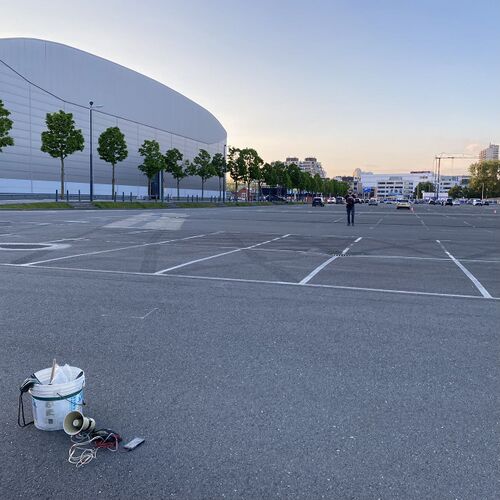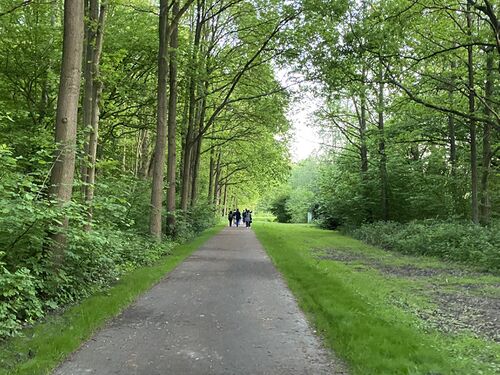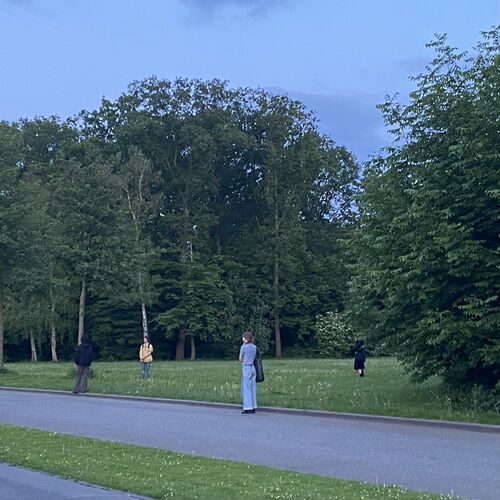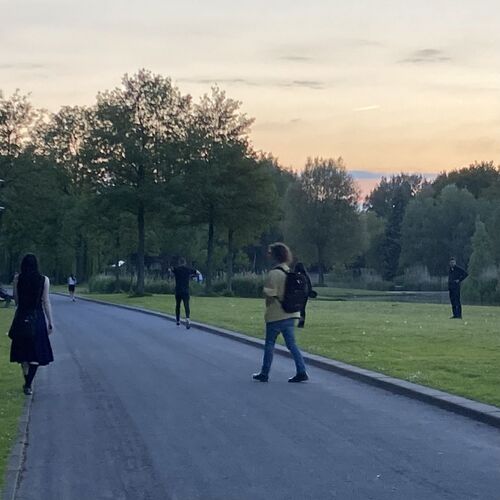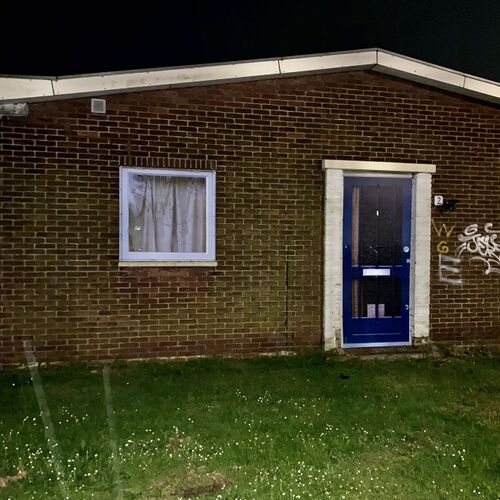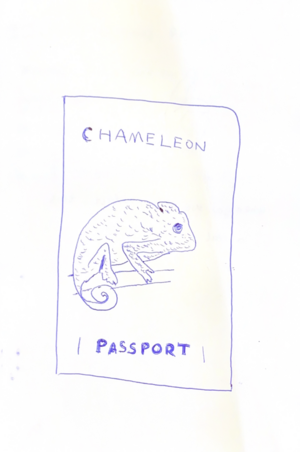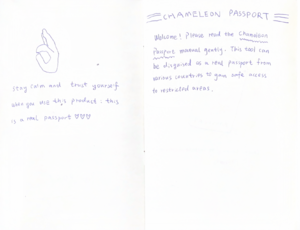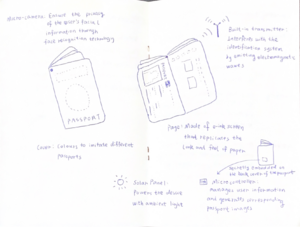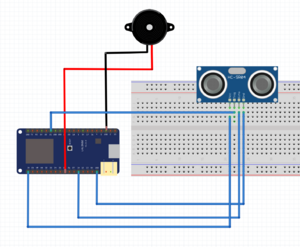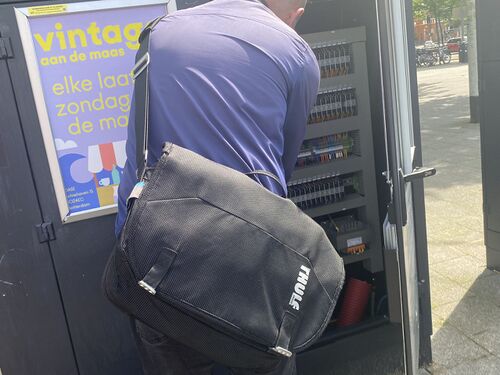User:ZUZU/SI 24
4/8
Start
- Pad for 8 April
Explore the possibilities of loitering and launching in or around Rotterdam
Why Loiter?
Why Loiter?: Women and Risk on Mumbai Streets by Shilpa Phadke points out that "loitering" is viewed negatively in Indian society, and women are expected to have a legitimate reason for being out in public. Otherwise, they may be considered not conforming to societal expectations of being a "respectable woman." This perspective reflects a common narrative of victim blaming prevalent in patriarchal societies, where women are advised to move from one sheltered space to another , and any deviation from this norm is seen as a moral deficiency by default.
Women have the right to freely navigate urban spaces without fear or judgment. Shilpa Phadke proposes a social initiative that encourages women's "loitering" to occupy urban public spaces, advocating for the creation of a more inclusive and equitable urban environment where women can move about freely without the fear of being labeled or subjected to shame.
Loitering around Blaak
The weather was lovely and we took a nice walk around Blaak, sharing memories of our individual hometowns.
4/9
Beginning of Microcontroller
Circuit Brief
delect right board eg. Wemos Lolin32
- Install ESP32 Board Package
- Tools > Board > Wemos Lolin32
- Tools > Upload Speed
4/10
- Pad for 10 April
- Pad for personal reader
Information Overload
INFORMATION OVERLOAD by Claire Bishop The article discusses the development of research-based installation art in contemporary art and the problems it faces.The author points out that a large number of research-based installation artworks have emerged in recent years that lack clear definitions and critical analyses. The article analyses three stages in the development of research-based art:"Many of these pieces convey a sense of being immersed-even lost-in data." Contemporary viewers face pressures from visually saturated contexts and attentional economies when processing information. And contemporary audiences are under pressure to process information through visual saturation and an economy of attention.
Blasé attitude or the Flâneur
The Metropolitan: Blasé attitude or the Flâneur describes the phenomenon of individuals experiencing a sense of Blasé in metropolitan life I've been trying to find a description about my own feelings about city life, and this term accurately describes my personal emotions
4/15
Making list
Pad for lists
list Sketching, observing the city as a spectator, joining the observation from a subjective point of view
- People sitting in shopping center rest area during workday from 11:11am
- where /how /why people laughing in public space
- List of shop signs
- Things dangerous in the park
- The sound that occurs when people enter a space
- Things between curtains and windows
4/22
Psychogeography
Psychogeography infuses a subjective, soulful perspective into the study of urban spaces, emphasizing the immediate opinions and instincts individuals form upon entering a space. This concept was first proposed and developed by members of the Situationist International, involving the decoding of urban environments through unconventional exploratory methods, akin to the cut-up techniques used by artists like William Burroughs and Brion Gysin. The term "psychogeography" combines the Greek root "graphein" (to write) and the Latin prefix "psyche" (soul), symbolizing the interweaving of earth, mind, and movement. 心理地理学强调个人进入空间后形成的直接观点和本能。这一概念最早由情境主义国际的成员提出和发展,涉及通过非常规的探索方法对城市环境进行解码,类似于威廉-巴勒斯(William Burroughs)和布里昂-吉辛(Brion Gysin)等艺术家使用的剪切技术。心理地理学 "一词融合了希腊语词根 "graphein"(书写)和拉丁语前缀 "psyche"(灵魂),象征着大地、心灵和运动的交织。
Psychogeographers reinterpret urban spaces in a playful manner, revealing the influence of geographical environments on emotions and behaviors. This approach challenges traditional geographical research by reshaping power structures and cultural ideologies within modern society and capitalist landscapes. Through subjective experiences, chance encounters, and emotional reactions to various urban spaces, psychogeographers seek to understand and interpret urban environments with a nuanced understanding of human experiences within cityscapes.心理地理学家以游戏的方式重新诠释城市空间,揭示地理环境对情感和行为的影响。这种方法通过重塑现代社会和资本主义景观中的权力结构和文化意识形态,对传统的地理研究提出了挑战。通过对各种城市空间的主观体验、偶遇和情绪反应,心理地理学家试图通过对城市景观中人类体验的细微理解来理解和诠释城市环境。
reference
Situationist International Anthology国际情况主义者文选
Psychogeography: A Purposeful Drift Through the City心理地理学: 有目的的城市漂流
Cryptoforestry隐性林业
Theory of the Dérive
4/23
ESP32 WiFi Access Point with Web Server for LED Control and Sensor Monitoring
sensor collections
Create a WiFi Access Point (AP) using an ESP32 microcontroller. It sets up a web server on this AP to control an LED and display sensor readings (humidity and temperature) via a web interface.
#include <DHT.h>
#include <WiFi.h>
#define DHTPIN 21
#define LED_BUILTIN 23 // GPIO pin for the LED (change as needed)
#define DHTTYPE DHT22
DHT dht(DHTPIN, DHTTYPE);
float humidity; // Variable to store humidity value
float temperature; // Variable to store temperature value
const char *ssid = "jungle"; // WiFi AP SSID
const char *password = "myPassword"; // WiFi AP password
WiFiServer server(80); // Create a server object that listens on port 80
void setup() {
pinMode(LED_BUILTIN, OUTPUT); // Set LED pin as output
Serial.begin(115200); // Initialize serial communication
Serial.println();
Serial.println("Configuring access point...");
dht.begin(); // Initialize DHT sensor
// Start WiFi access point
if (!WiFi.softAP(ssid, password)) {
Serial.println("Soft AP creation failed.");
while(1); // Infinite loop if AP creation fails
}
IPAddress myIP = WiFi.softAPIP(); // Get IP address of the AP
Serial.print("AP IP address: ");
Serial.println(myIP);
server.begin(); // Start the server
Serial.println("Server started");
}
void loop() {
WiFiClient client = server.available(); // Check for incoming client connections
if (client) { // If a client is connected
Serial.println("New Client."); // Print message to serial monitor
String currentLine = ""; // String to hold incoming data from the client
while (client.connected()) { // Loop while client is connected
if (client.available()) { // If data is available from client
char c = client.read(); // Read a byte from client
Serial.write(c); // Print byte to serial monitor
if (c == '\n') { // If end of line is reached
if (currentLine.length() == 0) { // If current line is blank, end of HTTP request
client.println("HTTP/1.1 200 OK"); // Send HTTP response headers
client.println("Content-type:text/html");
client.println();
humidity = dht.readHumidity(); // Read humidity value from sensor
temperature = dht.readTemperature(); // Read temperature value from sensor
// Send HTML response with sensor data and LED control links
client.print("<meta http-equiv='refresh' content='0.1'>");
client.print("<style>body{background-color:purple;}</style><br>");
int radius = map(humidity, 30, 90, 0, 200);
client.print("<style>.object{width:400px;height:400px;}</style><br>");
client.print("<style>.object{border-radius:"+ String(radius)+"px;background-color:white; }</style><br>");
client.print("<h1>eviltwin" + String(temperature) + "</h1><br>");
client.print("<div class='object'></div><br>");
client.print("Click <a href=\"/H\">here</a> to turn ON the LED.<br>");
client.print("Click <a href=\"/L\">here</a> to turn OFF the LED.<br>");
client.print("<p>Humidity: " + String(humidity) + " %</p>");
client.print("<p>Temperature: " + String(temperature) + " °C</p>");
client.println(); // End of HTTP response
break; // Exit the loop
} else {
currentLine = ""; // Clear current line
}
} else if (c != '\r') { // If not end of line or carriage return
currentLine += c; // Add character to current line
}
// Check for specific client requests to control LED
if (currentLine.endsWith("GET /H")) {
digitalWrite(LED_BUILTIN, HIGH); // Turn LED ON
}
if (currentLine.endsWith("GET /L")) {
digitalWrite(LED_BUILTIN, LOW); // Turn LED OFF
}
}
}
// Close client connection
client.stop();
Serial.println("Client Disconnected.");
}
}
5/06
Mosquito Device
Explore mosquito devices with Angeliki Diakrousi
5/07
00111010-00101001
5/08
Sense of Place Loss
During our first class, when everyone shared memories of where they come from, I found this question to be quite conflicting for me. Physically, identifying where I come from implies that this place had the most significant impact on my upbringing. However, I struggle to claim a specific place name as my place of origin because I lack a sense of belonging.
In the context of "How to Do Nothing: Resisting The Attention Economy" by Jenny Odell,the author discusses how contemporary society's emphasis on efficiency, productivity, and digital media's fast pace continually disperses and manipulates people's attention.Odell proposes the idea of "doing nothing" as a means to counteract this attention economy, which is characterized by the ubiquitous spectacles of attention-seeking in urban environments, as described in "Society of the Spectacle" by Guy-Ernest Debord. These spectacles incessantly attract attention and contribute to feelings of exhaustion and disillusionment with the surrounding environment.
当我在鹿特丹行走并参与观察清单和编码行走等活动时,我发现非常规的行为模式非常有趣。我通过偏离传统地图的表现形式来探索我与这座城市的联系,发现非常规的行走方式如何在典型路线(如从家到学校或从家到市场)中建立联系。While walking in Rotterdam and engaging in activities like observation lists and coded walking, I find unconventional behavioral patterns intriguing. I am exploring my connection with this city by deviating from traditional map representations, discovering how unconventional walking can forge connections within typical routes (such as from home to school or home to the market).
5/13
Three Projects
-We experience three projects together with Davide Tidoni
-The first took place in an open area where the artist used a player to emit sounds, testing whether the sound remained synchronized at a distance and whether it was affected by surrounding objects
walking ..........................................................................................................................................................
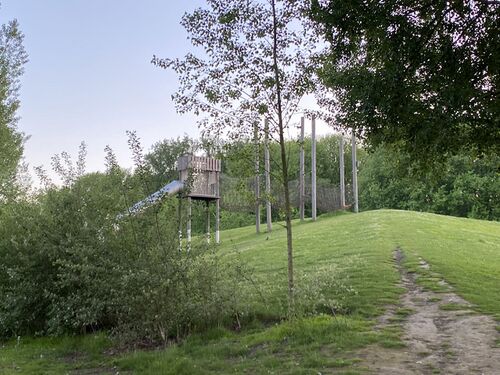 ..........................................................................................................................................................walking
..........................................................................................................................................................walking
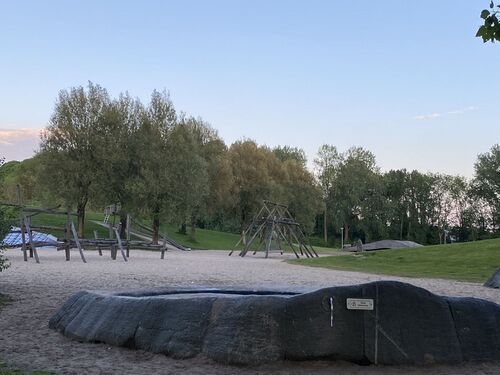 ..........................................................................................................................................................walking
..........................................................................................................................................................walking
-The second project occurred in a park, with the artist playing a specific frequency of sound and instructing participants to disperse in different directions to determine how far the sound could be heard.
An interesting thing is that when you concentrate on trying to listen to this frequency, other ambient sounds suddenly become abundant, sounds that are normally automatically filtered by the brain.
The third project was in a quiet community, where participants wore iron pieces on their feet and had to walk carefully without making noise; any noise resulted in stopping briefly before continuing until reaching the end of an alley.
5/14
PCB etching
Pad for PCB etching
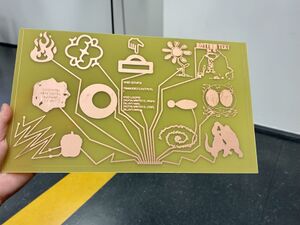
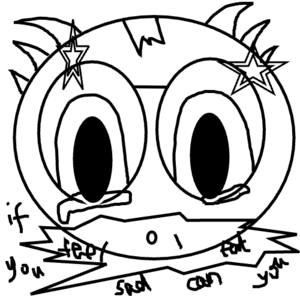
Documentation page for the etching process
5/15
Pad for 5/15
How to Do Nothing
The Society of the Spectacle
5/21
Pad for 5/21
Chameleon Passport
World:
- Hanging out is illegal
- All space is private (public space is illegal)
- You need different access cards to traverse through different private spaces without getting arrested and have a clear working purpose.
You:
- Want to joing the evil twin network that is seeking to disrupt/take down the technologies that enforce privatization
-How is it called? Chameleon Passport -How does it look? Should be thin, the colour depends on the country, the colour changes like a chameleon. -What is its structure? It has a cover, inside it resembles a passport. -What are its parts? Emitter, small solar panel, made of a screen that looks like paper (e-ink) -How do people interact with/use it? They carry it in their bag like a real passport -What are its functions? When you are close to the monitor, it emits electromagnetic waves which disrupts the machines' ability to recognise you. -Does it need precautions? It might become hot when situations get bad.
Prototype for Cactus passenger
#include <afstandssensor.h>
// Define pins numbers
const int trigPin = 21;
const int echoPin = 14;
const int speakerPin = 25;
// Create an instance of AfstandsSensor
AfstandsSensor afstandssensor(trigPin, echoPin);
void setup () {
Serial.begin(9600); // Initialize serial communication
}
void loop () {
// Measure distance
int distance = afstandssensor.afstandCM();
// Print distance
Serial.print("Distance: ");
Serial.print(distance);
Serial.println(" cm");
// tone(25,distance*5);
// delay(50);
// Check if an object is detected
if (distance > 0 && distance < 50) {
// Make sound with the speaker based on distance
int toneFrequency = map(distance, 1, 50, 2000, 500); // (nearer is higher pitch)
tone(speakerPin, toneFrequency); // Frequency based on distance
delay(500);
noTone(speakerPin); // Stop sound
} else {
noTone(speakerPin); // No object no sound
}
}
5/27
Pad for 5/27
Work from a governmental perspective
We attended a presentation by the Innovation Group of Rotterdam at the government building. Interestingly, it was my first time inside a city government building, and it was clear that the facilities resembled those of a tech company more than a typical serious administrative building.
A lively discussion arose around the topic of "how to encourage people to properly dispose of their trash." The department introduced several methods, one of which involved placing a picture of eyes on trees near the trash bins to create a sense of being watched, akin to "Big Brother is watching you." This approach sparked a debate on ethical standards
It turns out that traffic management is not a simple process. I was unaware of the hidden mechanisms behind it until a gray box was opened, revealing a complex network of cables. Inside, colorful buttons control the traffic lights at Rotterdam's busiest intersections.
5/28
熊掌
pulse sensor ♥
5/29
Pad for 5/29
6/01
Pad for small group discussion
Pad for launch the SI
Pad for production
6/02
power supply for wearable device
recycling vape batteries


